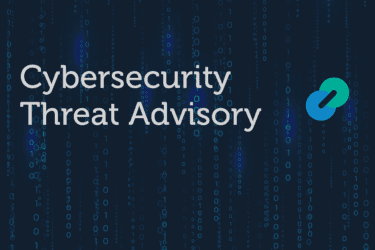Category: Featured

Cybersecurity Threat Advisory: Google Chrome zero-day vulnerability
Google has issued a security update for Chrome desktop to address CVE-2025-5419, which has a CVSS score of 8.8. It is a critical zero-day flaw in the V8 JavaScript engine that is actively exploited by attackers. Continue to read this...

Cybersecurity Threat Advisory: Fortinet authentication bypass vulnerability
A critical vulnerability was identified in Fortinet’s FortiProxy, FortiSwitchManager, and FortiOS products. This vulnerability, CVE-2025-22252, enables an attacker who possess knowledge of an existing administrative account to bypass authentication and gain unauthorized access to the device as a valid administrator....

AI and MSPs: Navigating the new cybersecurity frontier
Managed service providers (MSPs) have seen their portfolios expand significantly over the past decade, from primarily handling the nuts and bolts of systems to becoming frontline defenders in an increasingly complex digital threat landscape. However, there is a growing component...

Tech Time Warp: Thank you, Steve Wilhite, for the best GIFt ever
Chances are, you shared or received a GIF today, whether on social media or a messaging application. In 1987, developer Steve Wilhite and his team at CompuServe had no idea the impact they would have on modern communication when they...

Cybersecurity Threat Advisory: ViciousTrap exploiting Cisco vulnerability
Researchers have identified a new threat actor, “ViciousTrap”, actively exploiting a well-known vulnerability (CVE-2023-20118) to compromise over 5,300 Cisco Edge devices. The attackers are exploiting this flaw to establish a global honeypot network, posing a significant risk to the affected...

Global MSP Day 2025 is just a week away
Managed service providers (MSPs), your moment is here: Global MSP Day 2025 is just around the corner! On Thursday, June 5, we’re celebrating the pros who keep businesses running in an unpredictable, tech-driven world by solving problems, staying ahead of...

We’re celebrating Global MSP Day 2025!
We’re thrilled to announce that we’ll be joining the celebration for Global MSP Day 2025, hosted by Barracuda, on Thursday, June 5th. It’s always a special moment in our calendar – a day that brings together the managed services community across...

Tech Time Warp: Remembering the video phone skeptics
Since March 2020, many office workers rarely go a day without hopping on a quick Zoom or Teams call. However, back on May 30, 1996, when Intel announced its new PC-based videophone, few could imagine a day in the future...


